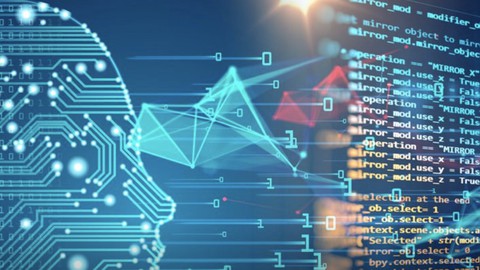Professional Certificate in Data Science 2023


Price: 19.99$
At the end of the Course you will have all the skills to become a Data Science Professional. (The most comprehensive Data Science course )1) Python Programming Basics For Data Science – Python programming plays an important role in the field of Data Science2) Introduction to Machine Learning – [A -Z] Comprehensive Training with Step by step guidance3) Setting up the Environment for Machine Learning – Step by step guidance4) Supervised Learning – (Univariate Linear regression, Multivariate Linear Regression, Logistic regression, Naive Bayes Classifier, Trees, Support Vector Machines, Random Forest)5) Unsupervised Learning6) Evaluating the Machine Learning Algorithms7) Data Pre-processing8) Algorithm Analysis For Data Scientists9) Deep Convolutional Generative Adversarial Networks (DCGAN)10) Java Programming For Data Scientists Course Learning Outcomes To provide awareness of the two most integral branches (Supervised & Unsupervised learning) coming under Machine Learning Describe intelligent problem-solving methods via appropriate usage of Machine Learning techniques. To build appropriate neural models from using state-of-the-art python framework. To build neural models from scratch, following step-by-step instructions. To build end – to – end solutions to resolve real-world problems by using appropriate Machine Learning techniques from a pool of techniques available. To critically review and select the most appropriate machine learning solutions To use ML evaluation methodologies to compare and contrast supervised and unsupervised ML algorithms using an established machine learning framework. Beginners guide for python programming is also inclusive. Introduction to Machine Learning – Indicative Module Content Introduction to Machine Learning:- What is Machine Learning ?, Motivations for Machine Learning, Why Machine Learning? Job Opportunities for Machine Learning Setting up the Environment for Machine Learning:-Downloading & setting-up Anaconda, Introduction to Google Collabs Supervised Learning Techniques:-Regression techniques, Bayer’s theorem, Naïve Bayer’s, Support Vector Machines (SVM), Decision Trees and Random Forest. Unsupervised Learning Techniques:- Clustering, K-Means clustering Artificial Neural networks [Theory and practical sessions – hands-on sessions]Evaluation and Testing mechanisms:- Precision, Recall, F-Measure, Confusion Matrices, Data Protection & Ethical Principles Setting up the Environment for Python Machine Learning Understanding Data With Statistics & Data Pre-processing (Reading data from file, Checking dimensions of Data, Statistical Summary of Data, Correlation between attributes)Data Pre-processing – Scaling with a demonstration in python, Normalization , Binarization , Standardization in Python, feature Selection Techniques: Univariate Selection Data Visualization with Python -charting will be discussed here with step by step guidance, Data preparation and Bar Chart, Histogram , Pie Chart, etc.. Artificial Neural Networks with Python, KERASKERAS Tutorial – Developing an Artificial Neural Network in Python -Step by Step Deep Learning -Handwritten Digits Recognition [Step by Step] [Complete Project ]Naive Bayes Classifier with Python [Lecture & Demo]Linear regression Logistic regression Introduction to clustering [K – Means Clustering ]K – Means Clustering The course will have step by step guidance for machine learning & Data Science with Python. You can enhance your core programming skills to reach the advanced level. By the end of these videos, you will get the understanding of following areas the Python Programming Basics For Data Science – Indicative Module Content Python Programming Setting up the environment Python For Absolute Beginners: Setting up the Environment: Anaconda Python For Absolute Beginners: Variables , Lists, Tuples , Dictionary Boolean operations Conditions , Loops(Sequence , Selection, Repetition/Iteration)Functions File Handling in Python Algorithm Analysis For Data Scientists This section will provide a very basic knowledge about Algorithm Analysis. (Big O, Big Omega, Big Theta)Java Programming for Data Scientists Deep Convolutional Generative Adversarial Networks (DCGAN)Generative Adversarial Networks (GANs) & Deep Convolutional Generative Adversarial Networks (DCGAN) are one of the most interesting and trending ideas in computer science today. Two models are trained simultaneously by an adversarial process. A generator , learns to create images that look real, while a discriminator learns to tell real images apart from fakes. At the end of this section you will understand the basics of Generative Adversarial Networks (GANs) & Deep Convolutional Generative Adversarial Networks (DCGAN). This will have step by step guidance Import Tensor Flow and other libraries Load and prepare the dataset Create the models (Generator & Discriminator)Define the loss and optimizers (Generator loss , Discriminator loss)Define the training loop Train the model Analyze the output Does the course get updated?We continually update the course as well. What if you have questions?we offer full support, answering any questions you have. Who this course is for: Beginners with no previous python programming experience looking to obtain the skills to get their first programming job. Anyone looking to to build the minimum Python programming skills necessary as a pre-requisites for moving into machine learning, data science, and artificial intelligence. Who want to improve their career options by learning the Python Data Engineering skills.






